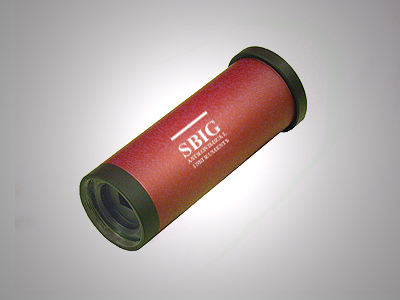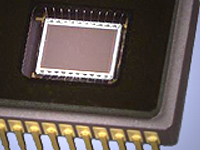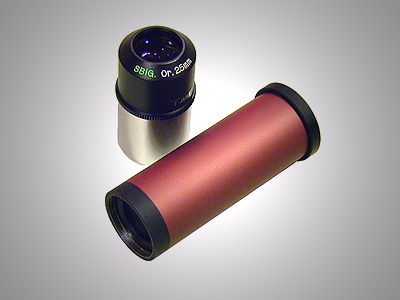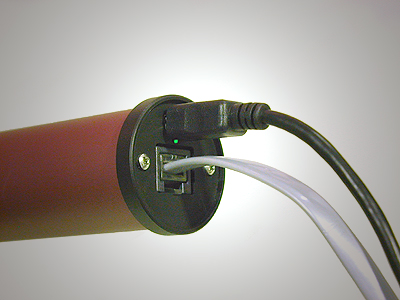ST-i
Planet Cam and Autoguider

ST-i PLANET CAM AND AUTOGUIDER
-
Low noise, high sensitivity CCD - Monochrome or Color
-
Internal mechanical shutter for automatic dark frames
-
Electronic shutter for short exposures
-
Up to 21 frames per second in focus mode
-
16 bit A/D
-
Eyepiece size body (1.25" diameter)
-
Low cost
-
Lightweight - only 2.2 oz.
-
Powered from USB Port
-
Standard Guider Output Port
-
Front end threaded for standard 1.25" filters
-
CCDOPS Autoguiding and Imaging Software with Planet MasterTM
-
CCDSoftV5 Autoguiding and Imaging Software Software
The ST-i Planet Cam and Autoguider adds features unavailable elsewhere in a camera of this size and price. A high performance compact camera that is an excellent guider and very capable Planet Camera. The body is light weight, no larger than many 1.25" eyepieces. In fact, it is 1.25" in diameter, 3.5" long and weighs only 2.2 ounces. The camera receives both control signals and power from the USB port of your computer, so only one thin USB cable is required for using the camera as an imager. For guiding, a standard, opto-isolated, autoguider output port is located in the back panel (see below).
KODAK KAI-340 CCD - Mono or Color
 |
Rather than using a low cost CMOS sensor (with high noise), the ST-i uses a high quality, low noise, Kodak CCD. The KAI-340 CCD has a measured read noise of only 9e- in the ST-i camera. This is the same CCD used as the guiding sensor in the new STX series cameras and the AllSky-340 cameras. The array is 648 x 484 pixels at 7.4 microns square. Anti-blooming is standard. We use only the Class 1 version of this CCD with 0 column defects, 0 cluster defects, 0 dead pixels, and 0 saturated pixels, all according to Kodak specifications. On-chip binning is available for 14.8u pixels if desired, and various sub-frame modes may be used to speed-up the focus and download rates. A full frame high res image will update at the rate of approximately 5 frames per second. In addition to full-frame, half-frame and quarter-frame modes, the user may select a sub-frame region of interest (ROI) of any size located anywhere on the CCD. In focus mode, using a 20 x 20 pixel box the update rate is greater than 20 frames per second. This sensor is available in monochrome or color.
Kodak describes the performance of this CCD: "Designed for demanding imaging applications, this sensor has additional features including electronic shuttering, peak QE (quantum efficiency) of 55%, extremely low noise and low dark current. These features give this sensor exceptional sensitivity and make it ideal for machine vision, scientific, surveillance, and other computer input applications."
ELECTRONIC AND MECHANICAL SHUTTERS
This sensor has an electronic shutter allowing exposure times as short as 0.001 seconds. Most other eyepiece sized cameras rely on this type of "global" shutter alone due to the difficulty and cost of building an additional mechanical shutter into the camera body. However, in the ST-i camera we have also included a mechanical shutter enabling the camera to automatically take dark frames. This feature alone dramatically improves the performance of the ST-i, particularly when used as an autoguider. Cooling of the CCD to reduce dark current is unnecessary at the short exposure times common to planetary imaging and autoguiding, but there remains the possibility of bright pixels in an image that can raise the threshold of brightness required for the most sensitive guiding performance. The ability to automatically take and subtract a dark frame results in a very smooth background against which detection of dim stars is more reliable. Finally, while some inexpensive guiders save cost by using low cost 8 bit or 10 bit electronics, the ST-i camera uses a high quality 16-bit A/D for superior resolution of the full dynamic range of the CCD, greater than 70 dB.
|
16-bit frame rates using prototype camera and desktop computer |
||||
| Focus Mode | Full Frame | Half Frame | Quarter Frame | 20 x 20 |
| High Res 1x1 | 5.8 fps | 10.6 fps | 16 fps | 21 fps |
| Medium Res 2x2 | 10.6 fps | 16 fps | 21 fps | 21.fps |
| Autograb mode | Full Frame | Half Frame | Quarter Frame | 20 x 20 |
| High Res 1x1 | 4.6 fps | 7.4 fps | 9.7 fps | n/a |
| Medium Res 2x2 | 7.3 fps | 9.9 fps | 11.9 fps | n/a |
| Focus = recorded using 0.001s exposure as reported by CCDOPS | ||||
| Autograb = Ave. of 100 uncompressed frames saved to disk using 0.001s exposure | ||||
STANDARD ACCESSORIES:
-
Camera with 1.25" threaded front plate (threaded for standard 1.25" filters)
-
15' (4.6 meter) USB cable
-
Tracking cable
-
CCDOPS Software with PlanetMasterTM
-
CCDSoftV5 Software
-
Manuals on CDROM
OPTIONAL ACCESSORIES:
-
1.25" UV/IR blocking filter (recommended for color camera)
-
1.25" to C-mount lens adapter
-
C-mount to Nikon or Canon FD 35mm lens adapter
-
Detachable tripod mounting ring (threaded for 1/4-20 bolt)




